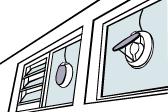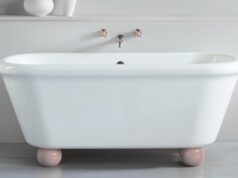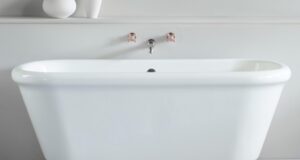
Kitchens and bathrooms can become very steamy and stuffy, and powered ventilation fans are an excellent way of providing fast, effective ventilation to these areas.
In your home there are particular rooms that are prone to problems created by localised humidity, namely the kitchen, bathroom, laundry and sauna (if you have one). The steam created by cooking, hot water and clothes dryers can have a dramatic effect on the climate within your home. Left to build up, this moisture can start to affect the walls and ceiling by creating problems of mildew and mould. An exhaust fan is a simple solution to this problem.

How do exhaust fans work?
Exhaust fans work by sucking hot or humid air out of a small, localised area, allowing fresh air to enter from elsewhere (perhaps a doorway or vent) in order to replace it. The warm air that’s drawn out using an exhaust fan is then pulled through a ducting system and expelled outside. Because of the steam and humidity that builds up in bathrooms, kitchens and laundries, these fans are most commonly found in those areas. Rangehoods over cooktops in kitchens are one type of exhaust fan.
Some exhaust fans employ sensors that allow them to automatically activate when they sense that there’s steam in the room.
How effective are exhaust fans?
As these fans are only really effective in smaller rooms, one that is capable of moving approximately 2 cubic metres per second usually provides sufficient ventilation. For larger areas, a larger ventilation system may be more appropriate.
The effectiveness of exhaust fans is really dependent on the size of the room, and the airflow rate necessary for that area. For example, a bathroom without a shower requires approximately eight air changes per hour. A bathroom with a shower may need 20.
How much air an exhaust fan can shift over a given amount of time is most commonly measured in cubic feet per minute (CFM), but is also referred to in terms of cubic metres per minute (m3/min). The amount of air a fan can shift depends on both its size and speed. A small fan may shift the same amount of air as a large fan, but would normally have to be oscillating faster to do so – depending on how the fan’s constructed, this may also make it more noisy. That’s not always a bad thing, of course. Some people prefer to have a noisy fan installed in the toilet to help drown out the sounds they might otherwise make!
The easiest way to determine what size and speed of fan you require is to figure out the volume of the room, then multiply it by the number of air changes you’ll need to keep it clear. If in doubt, ask a retailer or qualified installer.
|
Advantages
|
Disadvantages
|





